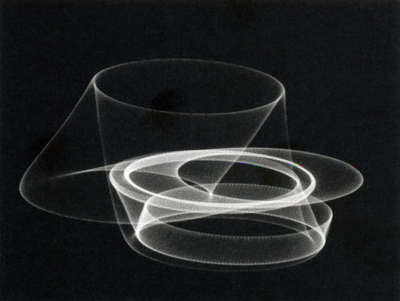“A cathode-ray oscilloscope served as the instrument; a routine device in physics laboratories. in addition, a mixing console was developed with which it was possible to generate and overlap electric alternating current of any time dependence. [ … ] Controlling the image processes according to predetermined programs and the influence of randomness is [ … ] insightful. Recently, such experiments have acquired a new importance: as design which permits the analysis of art using a simplified model as it were. As many electronic graphics can be described by formulas, they offer better preconditions for numerically capturing cognitive processes than traditional works of art, and make it possible to introduce an experimental way of working in scientific research on aesthetic processes.”
[Herbert W. Franke in: tendencije 4, exhib. cat.,
Galerija suvremene umjetnosti, Zagreb, 1970,
n. p.; translated from the German.]
Source: [Rosen, 2011]


